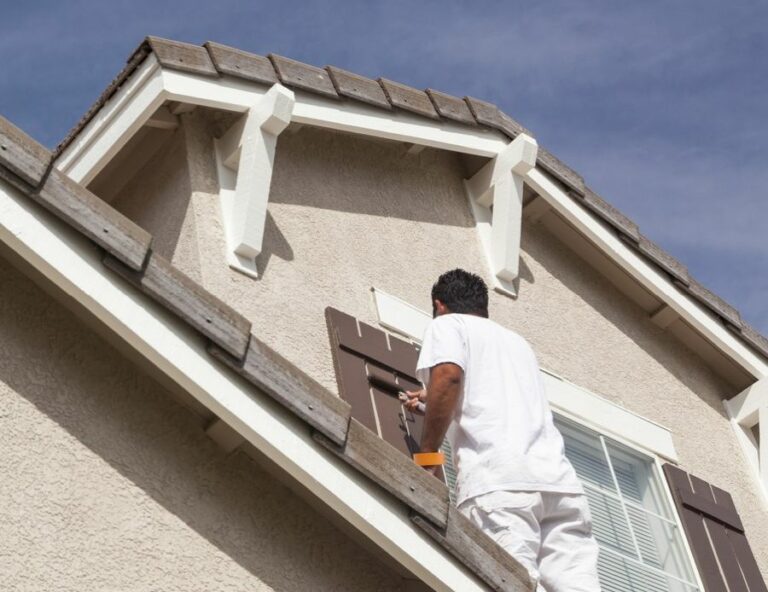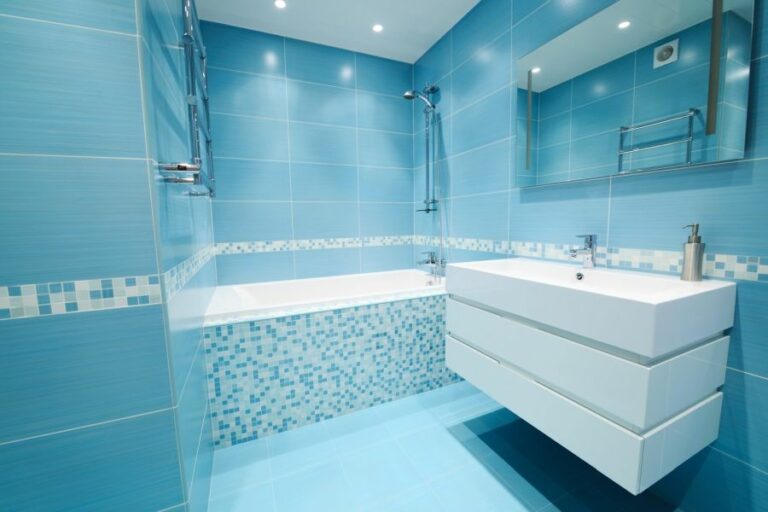Remove Paint And Rust From Surfaces Effectively. What Pros Say
Tired of the frustrating sight of stubborn paint and rust on various surfaces? Look no further! We’ve got the solution to bring back your favorite items’ original luster and beauty. Our foolproof methods for removing paint and rust will leave your surfaces looking brand new in no time.
Remove paint and rust from surfaces effectively:
To effectively remove paint and rust from surfaces, choose appropriate tools like angle grinders, sandblasters, heat guns, and chemical strippers. Utilize mechanical, chemical, heat-based, and abrasive techniques based on the project’s requirements. Prioritize safety using personal protective equipment such as gloves, goggles, and respirators.

Tired of unsightly paint and rust spots ruining your surfaces? Discover foolproof methods for eliminating these stubborn eyesores once and for all. Dive in further as we reveal expert tips and tricks to restore your surfaces to their former glory! Keep reading!
Contents
- 1 Effectively Eliminate Paint and Rust from Surfaces
- 2 Discover the Top Rust and Paint Removers
- 3 Uncover the Optimal Method for Rust Removal on Surfaces
- 4 Find the Top Technique for Removing Rust & Paint from Metal
- 5 Identify the Most Efficient Tool to Eradicate Rust and Paint
- 6 Can Vinegar Successfully Remove Rust and Paint?
Effectively Eliminate Paint and Rust from Surfaces
Efficiency is key when it comes to removing paint and rust from various surfaces. Throughout countless projects, I’ve discovered the most effective methods, tools, and safety precautions to streamline the process.
• Choose the Right Tools and Equipment
Choosing the appropriate tools and equipment can significantly impact the efficiency and ease of removing paint and rust. Here are some recommendations to ensure optimal results:
1. Angle Grinder
An angle grinder can be used with a variety of attachments, such as wire brushes, flap discs, and sanding discs. I recommend using a wire brush attachment, like the one found here, for heavy rust or thick layers of paint.
2. Sandblaster
A sandblaster is a powerful tool that uses compressed air to blast an abrasive material against surfaces at high speed. It is particularly effective for removing rust, paint, or graffiti from hard-to-reach areas, such as corners or detailed objects.
3. Heat Gun
A heat gun can soften paint to make it easier to remove with a scraper. It’s essential to handle a heat gun with care, as they can reach temperatures of up to 1,000 degrees Fahrenheit.
4. Chemical Strippers
Chemical-based paint strippers and rust converters can dissolve or transform layers of paint and rust from surfaces. I recommend using a gel or paste formula to maximize contact time with the material, ensuring the best results.
• Essential Personal Protective Equipment (PPE)
Safety should always be a top priority when working with paint and rust removal. These are some essential pieces of PPE to consider using:
- Gloves: Heavy-duty gloves protect your hands from sharp edges and potential chemical burns from paint strippers.
- Goggles: Safety goggles shield your eyes from debris and minimize the risk of injury.
- Respirator: A mask or respirator with appropriate filters protects your lungs from dust, debris, and harmful fumes from paint strippers.
• Effective Paint and Rust Removal Techniques
Now that you have the appropriate tools and protective equipment, its time to begin removing paint and rust from surfaces. Choose one or more of the following methods based on the specific characteristics of your project:
– Mechanical Techniques
- Grinding: Use an angle grinder fitted with a wire brush to power through thick layers of rust and paint on flat surfaces.
- Sanding: Attach sandpapers or abrasive discs on angle grinders or orbital sanders to remove paint and rust. Begin with coarse grit and work your way to finer grits for a smoother finish.
- Scraping: Use a paint scraper for smaller areas, especially when the paint is not fully adhered to the surface.
– Chemical Techniques
- Paint Strippers: Apply a chemical paint stripper on the surface following the manufacturer’s instructions. Allow the product to break down the paint layers before gently scraping it away using a plastic scraper.
- Rust Converters: Apply a rust converter on the rusted surface and allow it to react with the iron oxide, converting it into a more durable and inert compound.
– Heat-Based Techniques
- Heat Gun: Point a heat gun at the painted surface and gently move it around until the paint begins to bubble and soften. Use a scraper to remove the loosened paint, but be cautious of the heat, as it can cause burns.
– Abrasive Techniques
- Sandblasting: Sandblasting works best in outdoor environments or well-ventilated areas. Blast the surface with the appropriate abrasive media to remove rust or paint quickly.
• Post-Removal Steps and Finishing
After removing paint and rust, follow these steps to ensure your surface is ready for its next application:
- Cleaning: Vacuum or wipe away any loose debris, dust, or remaining particles from the surface.
- Final Sanding: Use fine-grit sandpaper to smooth out the surface and prepare it for priming or painting.
- Priming: Apply a layer of primer to create an even surface for paint adherence, particularly on metal surfaces prone to rust.
- Painting: Follow the manufacturer’s guidelines for the optimal application of your chosen paint, and allow it to cure fully for long-lasting results.
By following these recommendations and selecting the proper tools and techniques, you can efficiently remove paint and rust from surfaces, ensuring exceptional results for your projects.
Discover the Top Rust and Paint Removers
Rust and paint removal is commonly faced challenges in various applications, from automotive work to home renovation projects.
• Chemical Rust Removers
Chemical rust removers are specially formulated compounds that can remove rust from metal surfaces.
Most of these products contain chemicals like phosphoric acid, oxalic acid, or hydrochloric acid, which help to dissolve rust and convert it into a water-soluble form. Here are some popular chemical rust removers:
Naval Jelly is a thick, gel-like substance that contains phosphoric acid. When applied to a rusty surface, Naval Jelly reacts with the iron oxide (rust), forming a black, iron phosphate compound that can be easily wiped off with a clean cloth.
Pros:
- Easy and safe to use.
- Converts rust into a water-soluble compound that can be washed off.
- Can be applied to vertical surfaces due to its gel-like consistency.
Cons:
- May harm some metal surfaces if left too long.
- Can irritate skin and eyes protective gear must be worn.
I recommend using chemical rust removers for small to medium-sized rust removal tasks, as they are easy to apply and provide satisfactory results when used correctly.
• Mechanical Rust Removal Methods
Mechanical rust removal involves the use of abrasive tools or equipment to physically remove rust from a surface. Some popular mechanical rust removal methods include:
– Sandpaper and Steel Wool
Grit sandpaper or steel wool can be used to manually remove rust from surfaces by rubbing the abrasive material against the rusted area.
For best results, use coarse-grit sandpaper or coarse steel wool for removing heavy rust and fine-grit sandpaper or fine steel wool for finishing and smoothing the surface.
Pros:
- Simple, inexpensive, and easy to use.
- Can be used as a spot treatment for small rust spots.
Cons:
- Time-consuming, especially for larger areas or thicker rust layers.
- May scratch or damage the surface of the material being treated.
– Wire Brushes and Wire Wheels
Wire brushes and wire wheels can be used to remove rust from surfaces more efficiently than sandpaper or steel wool. Attach a wire brush or wheel to a power drill or angle grinder, and use it to scrub away rust from the surface.
Pros:
- Faster and more efficient than sandpaper or steel wool.
- Can cover larger areas and remove thicker layers of rust.
Cons:
- Can cause damage to the surface if used too aggressively.
- May require the use of a power tool.
I recommend mechanical rust removal methods for larger, more heavily rusted surfaces, or when precision is not necessary.
• Paint Strippers
Paint strippers are chemical-based products designed to remove paint from surfaces. They can be divided into two main types: solvent-based and caustic-based.
– Solvent-Based Paint Strippers
Solvent-based paint strippers contain chemicals like methylene chloride, toluene, or acetone, which dissolve the paint’s binding agents, causing it to peel away from the surface. These can be used on various surfaces, including wood, metal, and plastic.
Pros:
- Fast-acting and effective.
- Can remove multiple layers of paint at once.
Cons:
- Highly toxic and potentially harmful if inhaled or absorbed through the skin; proper ventilation and protective gear are necessary.
- Can damage some surfaces, such as plastics.
– Caustic-Based Paint Strippers
Caustic-based paint strippers contain chemicals like sodium hydroxide, which react with the paint’s formula and break it down, allowing it to be scraped off the surface. These are most effective on wooden surfaces.
Pros:
- Effective for removing paint from wood.
- Can handle multiple layers of paint.
Cons:
- Can damage or darken wood surfaces if left on too long.
- Highly corrosive and can cause burns on skin contact protective gear is essential.
You should choose a paint stripper based on your specific needs and the type of surface you are working on. Always follow the manufacturer’s instructions for best results.
• Paint Scraping Tools
Paint scraping tools come in various shapes and sizes, designed to remove paint from surfaces without the use of chemicals. Some popular paint-scraping tools include:
– Putty Knives and Paint Scrapers
These tools feature a thin, flat blade that can be used to scrape paint off surfaces. To use, hold the tool at a slight angle to the surface, and apply even pressure while scraping the paint away.
Pros:
- Simple, inexpensive, and easy to use.
- Can be used for precision paint removal.
Cons:
- Time-consuming, especially for large areas or multiple layers of paint.
- May damage surfaces if used too aggressively.
– Power Sanders
Power sanders, such as orbital sanders or belt sanders, can be used to remove paint from surfaces quickly and efficiently. Choose the appropriate type of sandpaper and grit based on the surface and the desired finish.
Pros:
- Fast and efficient.
- Can remove multiple layers of paint at once.
Cons:
- May cause damage to surfaces if not used carefully.
- Requires access to electricity and the appropriate power tool.
When choosing a paint scraping tool, consider the size of the area you are working on, the type of surface, and the level of precision required.
• Infrared Paint Removers
Infrared paint removers use infrared heat to soften the paint, making it easier to scrape off the surface. This method is ideal for wooden surfaces, as it minimizes the risk of damage.
Pros:
- Eco-friendly and non-toxic.
- Minimizes the risk of damage to wood surfaces.
- Works well on multiple layers of paint.
Cons:
- Relatively expensive.
- Requires electricity and the appropriate tool.
For environmentally-conscious users, infrared paint removers are an excellent option, particularly for removing paint from wooden surfaces.
• Conclusion
In conclusion, each rust and paint removal method has its advantages and disadvantages, and the best choice will depend on your specific needs and the surface you are working on.
It is always essential to follow the manufacturer’s instructions and take the necessary safety precautions when using these products.
Remember, achieving the best results in rust and paint removal requires patience, practice, and proper technique take your time, and you’ll be rewarded with a clean, rust-free, and paint-free surface.
Uncover the Optimal Method for Rust Removal on Surfaces
Rust removal is a crucial task in maintaining the appearance and functionality of various surfaces, especially metallic ones. With the right approach, removing rust can be simple, effective, and even prevent future problems.
• Identifying the Extent of Rust
Before diving into rust removal methods, it’s essential to assess the level of rust on the surface. Depending on the severity of rust, different approaches may be required.
- Light rust: For surfaces with minimal rust or small spots, you can opt for simple household solutions, such as vinegar or lemon and salt.
- Moderate rust: If rust covers a larger area but hasn’t severely affected the material beneath, abrasive methods like sanding or scrubs can be employed.
- Severe rust: In cases where rust has significantly damaged the underlying material, you may need to consider chemical solutions or even professional services.
Understanding the rust’s extent will help determine the most suitable method for removal.
• Natural Remedies for Light Rust
For surfaces with light rust or just a few spots, natural remedies are cost-effective and eco-friendly solutions. Here are a few to try:
– Vinegar
Vinegar is a natural rust remover thanks to its acetic acid content. Follow these steps for effective rust elimination:
- Soak a cloth in white vinegar and place it on the rusted area.
- Wait for 15-30 minutes. If the rust is stubborn, feel free to leave it for a few hours.
- Gently scrub the rust off with a soft brush or steel wool.
- Rinse and pat the surface dry. Apply a protective layer of oil, wax, or paint to prevent future rust.
– Lemon and Salt
Another effective natural rust remover is a combination of lemon juice and salt. Follow these steps:
- Sprinkle some salt onto the rusted area.
- Squeeze lemon juice over the salt and let it sit for about 15 minutes.
- Scrub the rust off with a soft brush or abrasive sponge.
- Rinse and dry the surface. Apply a protective layer of oil, wax, or paint if necessary.
• Abrasive Techniques for Moderate Rust
For moderate rust, abrasive techniques are often more effective in removing large or stubborn spots.
– Sandpaper or Sanding
Using sandpaper or a power sander is a common method for removing rust. Gently sand the rusted area in a circular motion, applying moderate pressure.
Make sure not to sand too much, as it may damage the surface. Wipe the area clean, and consider applying an anti-rust primer or paint afterward.
– Steel Wool or Wire Brush
Both steel wool and wire brushes are useful tools for removing rust due to their abrasive nature. Ensure to scrub in a consistent motion to avoid leaving scratches. Wipe the area clean and apply a protective layer afterward.
• Chemical Solutions for Severe Rust
Severe rust may require the use of chemical solutions or even professional services. Here are some chemical options to consider:
– Commercial Rust Removers
Various commercial rust-removing products, like Naval Jelly or Rust Free, are available on the market. Make sure to follow the manufacturer’s instructions for the best results.
These products often come with safety precautions, so ensure to wear gloves and eye protection when handling them.
– Calcium Lime Rust Removers
Calcium Lime Rust (CLR) removers are specifically designed to remove rust, limescale, and calcium deposits. Follow the manufacturer’s instructions and recommended safety precautions.
• Surface Protection After Rust Removal
Regardless of the rust removal method, it is crucial to protect the surface from future rust incidence. Consider using oil, wax, paint, or available products like rust-converting primers to shield the cleaned material against rust formation.
• Conclusion
The best way to remove rust from surfaces depends on the rust’s severity and the chosen approach. Natural remedies, abrasive techniques, or chemical solutions can all be effective when used correctly.
Remember to protect the surface after rust removal to prevent recurring issues.
Find the Top Technique for Removing Rust & Paint from Metal
When dealing with metal surfaces, rust, and paint can be a common issue that needs to be addressed. Fortunately, there are several effective methods for removing rust and paint from metal surfaces.
• Method 1: Wire Brushing and Sanding
A combination of wire brushing and sanding is a useful technique for removing both rust and paint. This method is ideal for smaller metal items or surfaces in need of light cleaning.
– Step 1: Prepare the Surface
Before you start, ensure the metal surface is clean and dry. Remove any loose debris, dust, or dirt using a cloth or vacuum cleaner.
– Step 2: Wire Brushing
Use a wire brush to scrub any rusted areas on the metal surface. Be sure to apply firm pressure to ensure the effective removal of rust.
– Step 3: Sanding
Sand the surface using medium-grit sandpaper (80 to 120 grit) working in circular motions. This will help to remove any remaining rust and paint.
Pro Tip: Using a sanding block can make this process more comfortable and efficient.
– Step 4: Cleanup and Inspection
Wipe down the metal surface with a cloth or vacuum to remove any dust or debris. Upon inspection, if rust or paint is still present, repeat Steps 2 and 3 as necessary.
• Method 2: Chemical Rust and Paint Removers
Chemical removers can be highly effective in removing both rust and paint from metal surfaces. Note that these products may contain harsh chemicals, so it is essential to follow the manufacturer’s instructions carefully.
– Step 1: Safety Precautions
When working with chemical rust and paint removers, it is crucial to wear protective gear such as gloves, goggles, and a mask.
– Step 2: Apply the Remover
Following the manufacturer’s instructions, apply the chemical remover to the rusted or painted surface. Be sure to work in a well-ventilated area and avoid contact with skin or eyes.
– Step 3: Allow the Remover to Work
Allow the chemical remover to work on the metal surface according to the manufacturer’s recommended time frame. This can range anywhere between 15 minutes to a couple of hours.
– Step 4: Remove the Rust/Paint and Clean the Surface
After the recommended wait time, use a scraper or cloth to remove the rust and/or paint from the metal surface. Once complete, clean the surface with water or another recommended cleaning solution.
• Method 3: Abrasive Blasting
Abrasive blasting, also known as sandblasting or media blasting, is a highly effective method for removing rust and paint from metal surfaces. However, it is best suited for larger metal objects or surfaces and requires specialized equipment.
– Step 1: Safety Precautions
Wear appropriate safety gear when using abrasive blasting equipment, including gloves, goggles, and a mask. Additionally, work in a well-ventilated area to prevent inhalation of dust and debris.
– Step 2: Set Up the Equipment
Assemble and set up the blasting equipment according to the manufacturer’s instructions. Be sure to choose an appropriate abrasive medium based on the specific needs of your project.
– Step 3: Begin Blasting
Begin the blasting process, ensuring that you maintain a consistent distance and angle with the metal surface. Remember that the abrasive stream should target the rusted or painted areas directly.
– Step 4: Cleanup
Once the rust and paint have been removed, clean the metal surface as directed by the abrasive blasting equipment manufacturer.
• Method 4: Power Tools
For those with access to power tools, using a grinder, sanding pad, or rotary tool with a wire brush or abrasive attachment can be a highly effective method of rust and paint removal.
– Step 1: Safety Precautions
When using power tools, always follow safety recommendations, including the use of gloves, goggles, and hearing protection.
– Step 2: Choosing the Appropriate Attachment
Select the appropriate attachment for your specific rust or paint removal needs. For example, a wire brush attachment is ideal for rust removal, while abrasive attachments work best for paint removal.
– Step 3: Operate the Power Tool
Follow the manufacturer’s instructions for using your specific power tool, being sure to work in a well-ventilated area.
– Step 4: Inspect and Clean the Metal Surface
After removing the rust and paint, clean and inspect the metal surface. Repeat the process with the power tool as needed.
• Final Thoughts
Depending on the size and scope of your rust and paint removal project, one or a combination of these methods may be suitable. Remember always to prioritize safety precautions and follow the equipment and product instructions.
By applying these techniques effectively, you can ensure successful rust and paint removal from your metal surfaces.
What is the best way to remove rust and paint from metal?
Method | Process | Result |
|---|---|---|
Wire Brush | Manually scrub off rust and paint using a wire brush. | Effective for small amounts of rust and can also be used to remove loose paint. |
Sandpaper | Use sandpaper or an abrasive pad to remove rust and paint. | Effective for smaller areas but can be time-consuming. |
Chemical Paint Remover | Apply chemical paint remover to the affected area and leave for the recommended time. Remove using a scraper or brush. | Effective at removing paint, but not ideal for rust removal. |
Naval Jelly | Apply naval jelly to the rusted area, then rinse off after the recommended time. | Effective at removing rust, but not suitable for paint removal. |
Power Tools | Use power tools like sanders, grinders, or drill attachments to remove rust and paint. | Effective and time-efficient for larger areas, but requires additional safety precautions. |
Media Blasting | Use media blasting (sandblasting, soda blasting, etc.) to remove rust and paint from the metal. | Highly effective at removing both rust and paint, but requires specialized equipment. |
Identify the Most Efficient Tool to Eradicate Rust and Paint
When it comes to removing rust and paint from various surfaces, there are numerous tools and methods available to achieve a clean and smooth outcome. The key is to find the most efficient, effective, and user-friendly tool for these tasks.
• Sandblasters: Powerful and Efficient
In our experience, sandblasters stand out as the most useful tool for removing rust and paint. These versatile and powerful devices use compressed air to propel a stream of abrasive materials, such as sand or glass beads, against a surface.
The abrasive action of the sandblaster effectively removes paint, rust, and other unwanted materials from the target surface, resulting in a clean and smooth finish.
– Advantages of Sandblasters
There are several advantages to using a sandblaster for rust and paint removal, including:
- Time Efficiency: Sandblasters can make short work of large areas, making them ideal for time-sensitive projects or large-scale applications.
- Surface Versatility: They can be used on a wide range of surface types, including metal, wood, concrete, and brick.
- Adjustable Pressure and Abrasive: Sandblasters offer the flexibility to alternate air pressure and abrasive media, enabling users to tailor their approach for different surfaces and levels of rust or paint.
- Minimal Surface Damage: When used correctly, sandblasters can remove rust and paint without causing significant damage to the underlying material.
– Personal Experience and Recommendations
In my work, I have found sandblasters to be the go-to tool for removing rust and paint from surfaces such as car frames, outdoor furniture, and metal railings.
The speed and efficiency with which they complete these tasks, along with the versatility they offer, make them an invaluable tool in my arsenal.
However, there are some additional considerations to keep in mind when working with sandblasters:
- Safety Precautions: It’s important to wear proper safety gear, such as goggles, gloves, and a mask, as sandblasting can generate dust particles and debris that can be harmful if inhaled or come into contact with the eyes.
- Environmental Impact: Be conscious of the potential environmental impact of certain abrasive media, such as silica sand, which can be hazardous if not disposed of properly.
- Facility and Equipment: Sandblasting usually requires a dedicated space and equipment like an air compressor and blasting cabinet, which may be cost-prohibitive for some users.
• Alternatives to Sandblasters
While sandblasters are an excellent tool for removing rust and paint, there are alternative methods and tools available, including:
- Wire Brushes: These can be used manually or attached to power drills for quicker removal of rust and paint on smaller jobs or intricate surfaces.
- Angle Grinders: Equipped with abrasive discs, angle grinders are a great option for removing paint and rust from metal surfaces, particularly when a rough, textured finish is desired.
- Chemical Strippers: These specialized chemicals can dissolve paint and rust, making it easier to remove them from the surface with a scraper or other tools. Keep in mind that some chemical strippers can be toxic and require proper handling and disposal.
- Heat Guns: High temperatures produced by heat guns can soften paint and make it easier to remove with a scraper. This method is particularly useful for removing paint from wood surfaces.
- Laser Rust Removal: This innovative technology uses high-powered lasers to remove rust and paint from surfaces without causing damage. While it is still relatively expensive, it is worth considering for specialty and precision applications.
• Conclusion
In conclusion, sandblasters stand out as the most useful tool for removing rust and paint from a wide range of surfaces. Their versatility, efficiency, and effectiveness make them a valuable asset for professionals and DIY enthusiasts alike.
However, alternatives such as wire brushes, angle grinders, and chemical strippers can also be useful in certain scenarios.
The choice of the most appropriate tool will largely depend on the specific needs of the project and individual preferences.
Can Vinegar Successfully Remove Rust and Paint?
Vinegar is a versatile household item, often used for cooking, cleaning, and even laundry. Additionally, it can play a vital role in removing rust and paint from various surfaces.
• The Science of Vinegar: A Natural Cleaner
Vinegar’s ability to clean and remove rust and paint can be attributed to its natural acidic properties. Comprising about 5-20% acetic acid, the vinegar possesses a pH level between 2 and 3, which makes it quite acidic.
This acidity enables vinegar to break down rust and paint particles, loosening them from surfaces.
• Vinegar for Rust Removal
Using vinegar is a cheap and eco-friendly method for removing rust from various items such as tools, bicycles, and garden furniture. To follow this process, carry out the following steps:
- Select the appropriate vinegar. White vinegar is typically the go-to choice for rust removal due to its higher acetic acid concentration. However, apple cider vinegar can also work if white vinegar is unavailable.
- Submerge the rusted item. If feasible, soak the rusted item in a container filled with vinegar for several hours, or even overnight.
- Scrub the rusted area. After allowing enough time for the vinegar to loosen the rust, use a firm brush (such as a toothbrush or metal brush) to scrub away the rust particles. For more difficult rust spots, a scouring pad or fine-grit sandpaper can be used.
- Rinse and dry the item. Once the rust has been removed, rinse the object with water and dry it thoroughly to prevent new rust from forming. Applying a light coat of oil to the item can also help inhibit rust formation.
• Vinegar for Paint Removal
Vinegar can also be used to remove paint from various surfaces, such as walls, furniture, and metal fixtures. To effectively use vinegar as a paint remover, follow these steps:
- Heat up the vinegar. Warm white vinegar is more effective than cold vinegar for removing paint. Heat some white vinegar in a microwave or on a stove until it is warm but not boiling.
- Apply vinegar to the affected area. Use a sponge, cloth, or brush to apply the warm vinegar to the paint-covered surface. Allow the vinegar to sit on the surface for a few minutes.
- Scrape away the paint. After waiting for the vinegar to soften the paint, use a paint scraper or other suitable tool to scrape away the loosened paint. Be cautious to avoid damaging the underlying material.
- Repeat as necessary. Depending on the paint’s thickness and stubbornness, this process may need to be repeated several times.
- Clean the surface. Once the paint has been completely removed, clean the surface with soap and water, and then dry it completely.
• Additional Tips and Considerations
- When using vinegar to remove rust or paint, always perform a test on a small, inconspicuous area to ensure no adverse effects on the material.
- For stubborn rust or paint removal projects, a more potent vinegar solution (such as pickling vinegar or cleaning vinegar, which contain higher concentrations of acetic acid) can be utilized. However, these should be used with caution, as they can be more aggressive and potentially damage the material being cleaned.
- Combining vinegar with other natural cleaning agents, such as baking soda or lemon juice, may enhance its effectiveness in rust and paint removal.
In conclusion, vinegar is undoubtedly an effective, affordable, and eco-friendly solution for removing rust and paint from various objects and surfaces.
By following the guidelines and tips shared in this article, you can now tackle your rust and paint removal projects with confidence and ease.







